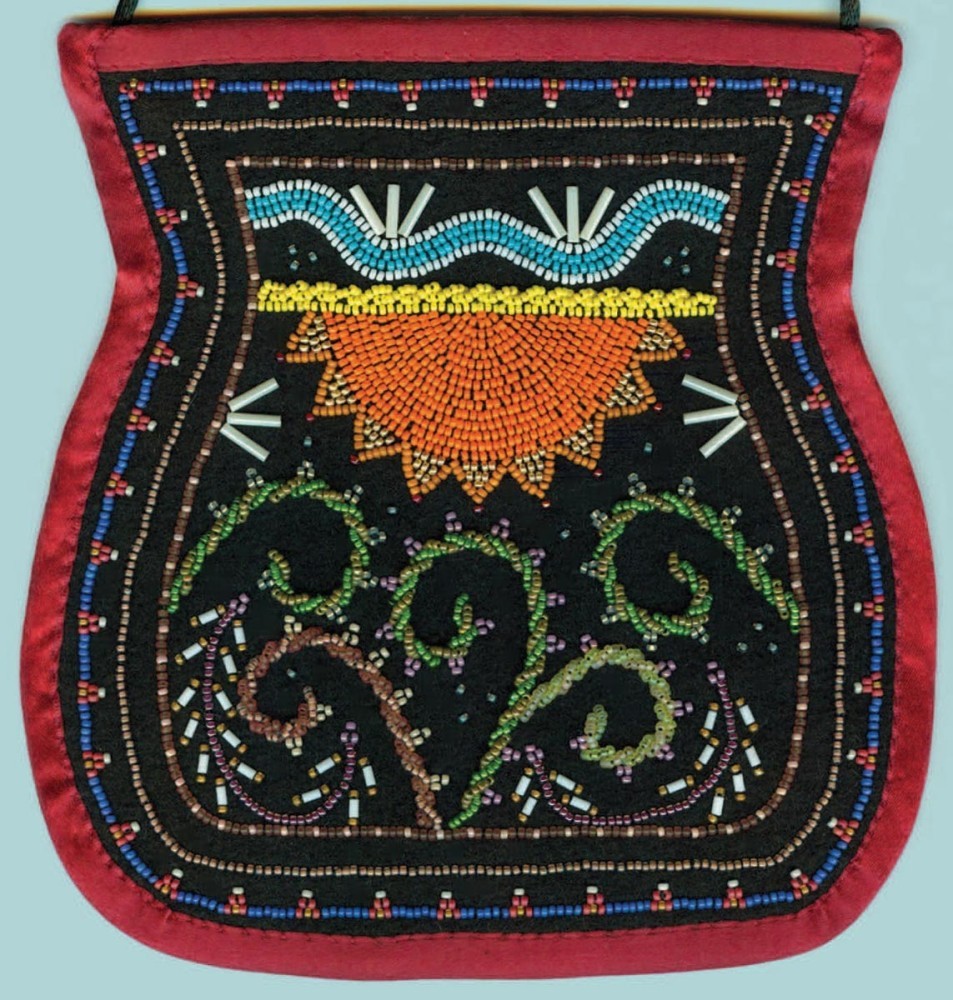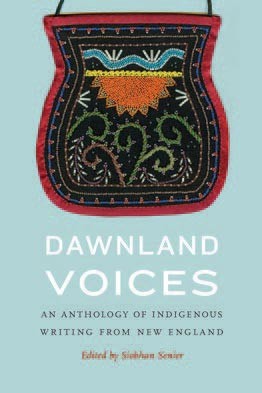
Learning From Dawnland Voices
Mi’kmaq, Maliseet, Passamaquoddy, Penobscot, Abenaki, Nipmuc, Wampanoag, Narragansett, Mohegan, Schaghticoke. These names represent Indigenous people living in New England, and there are many more: names of clans, names of confederacies of tribes joined together for mutual benefit. When Siobhan Senier taught Native American literature at the University of Maine and, later, began teaching at the University of New Hampshire, she sought to use the writing of northeastern authors. Time and again she was told “there just aren’t any” Native American authors in this region. She persisted – and with the help of other like-minded people, she found a wealth of regional Indigenous writing. Many of these works appear in Dawnland Voices: An Anthology of Writing from Indigenous New England, published by University of Nebraska Press in 2014 and edited by Senier and 11 tribal representatives.
“Even my well-informed colleagues were usually surprised to learn there is Native American literature here. Many people are aware that Native American literature exists, but some believe it was all oral tradition. If they have read any Native authors at all, these are almost always from the Southwest or Great Plains. On shelves labeled ‘American Indian’ in your local bookstore, writers from New England are almost always neglected,” wrote Senier in the introduction to Dawnland Voices. “That neglect has deep historic and political roots and perpetuates the erasure of people and cultures still very much part of the contemporary Northeast.”
The writing throughout Dawnland Voices describes individual, family, and tribal losses; celebrations of and attachment to place; and a determination to hold on to traditions and beliefs, while challenging policies that threatened to diminish Native American identity. Following publication, collaborators worked with Indigenous authors, artists, and historians to launch the Dawnland Voices website. The website has two components: Indigenous New England Digital Collections, where tribal archives and individuals upload items from their collections, sharing historic letters, stories, petitions, and photographs; and Dawnland Voices Magazine, an online magazine that features the work of established and emerging Indigenous writers and poets. Here, we bring this book and the website – which is updated annually – to the attention of new readers with the following excerpt from the introduction to the Abenaki Chapter of Dawnland Voices: An Anthology of Indigenous Writing from New England.
Abenaki
The petitions, prose, and poetry in [the Abenaki] chapter originate from the waterways of Ndakinna, “our land” in the Western Abenaki language, from the survivors of hundreds of years of resistance and resilience in the lands now most commonly known as northern New England and southern Quebec. While part of the larger Wabanaki – people of the dawn, people of the east – “Abenaki” is the term that came to be used most frequently for (and by) those Native families who inhabited the vast network of waterways from Lake Champlain, the western “lake between” Wabanaki and Iroquoia, to the Kennebec River on the west, and north to the mission towns of Odanak and Wolinak on the St. Francis River, as well as to multinational towns above Kwinitekw and Kennebec such as Menassan and Megantic.
The people and places of the Abenaki “home country” are connected by these waterways. It is no surprise that the central character in this chapter is the “long river” Kwinitekw, the Connecticut River that flows from its protected headwaters in northern New Hampshire through the countries of Koasek and Sokwakik, and all the way south through Mohegan country to the sea. While today it is the boundary between New Hampshire and Vermont, a river inundated with dams, old mills, and both industrial and agricultural pollution, it was once a superhighway of the eastern country, one of the most fertile places in the world, a cradle of agriculture that hosted numerous falls for bountiful salmon. It is a river that gathered families together. Kwinitekw remains a place lodged deeply in oral histories, in fishing and planting stories, and in collective memory. As the river begins its long recovery, its history and its songs are also being reclaimed and re-imagined, including by the [Abenaki] writers who have made it their touchstone.
Abenaki people fought fiercely for more than a century against English expansion into their homelands. Following the capitulation of their French allies, devastating losses due to warfare and disease, and the divisive politics of the American Revolution, Abenaki families remained in mission villages in Quebec, in the marshes and uplands of old villages and new colonial towns, and in groups of extended families who traveled old north country routes, gaining subsistence in the old way, through hunting, trapping, fishing, gathering, and trade, as well as day labor, logging, and small-scale farming. As Abenaki hunter Tahmunt Swassen told Henry David Thoreau, his hunting territory spanned an expanse from the northern Maine woods, where they then were sitting by a fire, to the Adirondacks and north to Quebec. Tellingly, Thoreau revealed in The Maine Woods, Swassen could “write his name very well” and was concerned with a law that he had recently read that recognized Wabanaki hunting rights in Maine.
Many of the ancestors of the [Abenaki] writers contained [in Dawnland Voices] traveled those same routes. While some remained very close to home, many families took the old superhighways of Kwinitekw, Molôdomek (Merrimack), and Kennebec south in the late nineteenth and early twentieth centuries, returning to old villages or traveling to Massachusetts and Connecticut to seek jobs, holding a persistent sense of northern New England and/or southern Quebec as home. The late twentieth century has been a time of reconnection, with families moving back up north to renew ties with the families who remained. It has also been a time of reconstruction, as we put the pieces of the puzzle back together, exchanging our family stories. Writing has been an important tool in this process of recovery. Piles of documents and boxes of family photos fill so many living room corners, and they have been brought out time and again at kitchen tables, weaving images and written words into oral histories. The pages of those writings are stained with coffee, maple syrup, and macaroni stew, the lasting evidence of our interactions. Mothers, fathers, and grandparents now tell ancient stories at those tables to their children, nearly forgetting they first learned them from reading the books of stories gathered and relayed with great care by Joseph Bruchac [who is featured in the Abenaki chapter along with the other writers mentioned here]. The language work of Henry Masta and Joseph Laurent, for years passed around as worn photocopies, now weaves its way through the poetry of Carol Bachnofer and Cheryl Savageau, even as it is used in the teaching and revitalization of language by Jesse Bruchac and Elie Joubert. Writing has been instrumental to this work. We leave it to be seen what the next generation will do with the increasing number of tools that they now have at hand.

It is these family stories, kept carefully and sometimes relayed casually, that enable us to recognize each other. They travel through this entire collection. They are the “backstory” behind the early petitions and letters. They appear as snippets of dialogue and narrative in the extraordinary language work of Laurent and Masta. They are relayed gracefully in the oral traditional prose of Claudia Mason Chicklas and Marge Bruchac. They undergird the vibrant journalism, poetry, and prose of Donna Laurent Caruso. They shimmer in the eloquent and evocative poetry of Joseph Bruchac, Cheryl Savageau, Carol Bachnofer, and Suzanne Rancourt. They are the stories that Robert Tahamont and the other Carlisle students were not allowed to write…at least not while they were in school.
We are connected through the bonds of kinship, friendship, mentorship, and sometimes, through family feuds, but most importantly, to draw an unshakably eloquent phrase from Cheryl Savageau’s poem, “What I Save,” we are bound to each other by “the water flowing through [us] that cannot be contained.”

